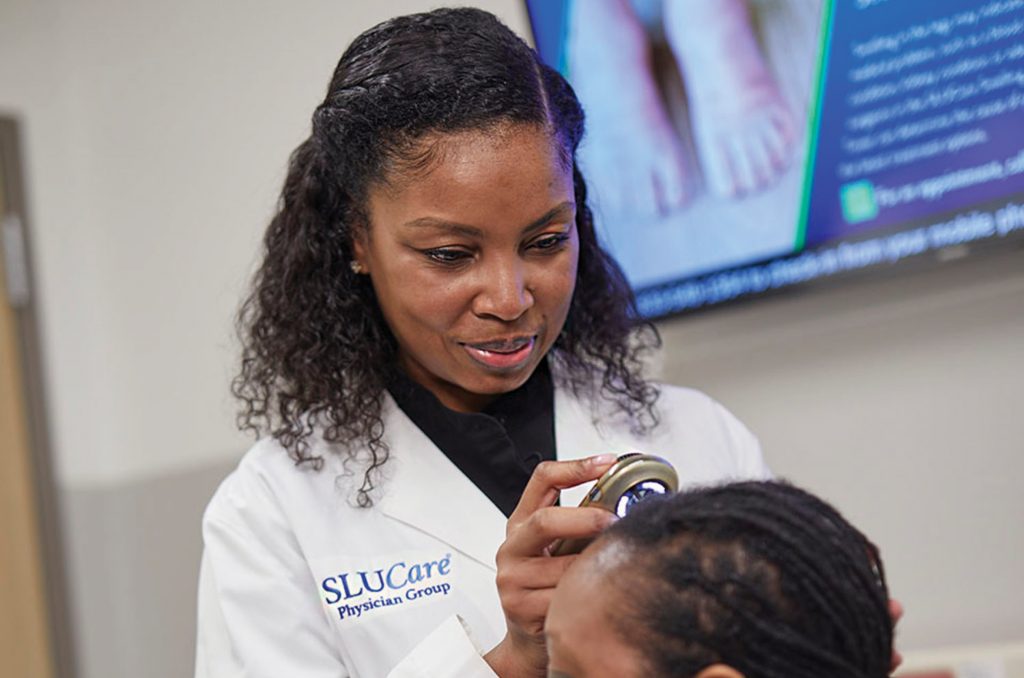While best known right now for being at the center of a headline-grabbing controversy, alopecia affects millions of men and women in the United States. We reached out to Kimberly Brown, a SLUCare physician assistant with the department of dermatology, to shed some light on the sensitive subject.
common types of alopecia
“Alopecia is a general term for all hair loss,” Brown explains. “People hear the term a lot, but they often don’t realize that not all alopecia is the same.”
- Androgenetic: More commonly known as male- and female-pattern baldness, this type of hair loss occurs with aging. It is related to hormones called androgens. Increased levels of androgens in hair follicles can lead to a shorter cycle of hair growth and shorter and thinner strands. For men, it usually begins with thinning around the crown of the head. For women, thinning usually starts through the part with the front hairline unaffected. This is the most common form of hair loss, impacting millions of Americans over the age of 65. However, Brown notes it can begin affecting people in their 20s.
- Alopecia areata: “This refers to hair loss due to an autoimmune condition,” Brown says. “It’s what people most commonly think of when they hear the word alopecia.” It often takes the form of hair loss in isolated patches around the scalp, usually about the size and shape of a coin. It also can occur throughout the body, including eyebrows, eyelashes, other facial hair and body hair. Unlike androgenetic alopecia, this type of hair loss does not become more common with age.
- Traction: This is hair loss due to physical pulling and strain on the hair follicles. It is often caused by tight hairstyles that cause continuous damage, such as braids, dreadlocks and ponytails. It can also be due to tight headwear like helmets, chemical relaxers or hair extensions. “You aren’t likely to experience traction alopecia if you go on vacation and get your hair braided once,” Brown notes. “It takes time and continuous stress on the hair for there to be a noticeable impact.”
when to see a doctor
Everyone loses around a 100 hairs a day on average, so some stands in your hair brush or on your pillow aren’t an immediate cause for concern. Hair loss becomes an issue when you shed more hair follicles than you regrow. Brown suggests seeking the attention of a doctor if you notice thinning or bald spots. ”Since there are so many causes of hair loss, there are several different treatments a medical professional might recommend,” she says. “These can include medication or injections to treat pattern baldness or autoimmune conditions.” Other common treatments include surgical transplants and laser therapy.
Brown urges people to consult a medical professional as soon as they realize their hair is thinning. “In most cases, I see patients who have been experiencing hair loss for around a decade, so the problem has gotten pretty extensive,” she says. “The sooner you seek an evaluation, the more effective treatment will be. The longer you wait, the harder it will be to see positive results.”
causes of alopecia
- Family history
- Hormonal changes
- Medical conditions
- Stress
- Medications and other treatments like radiation therapy and chemotherapy
- Excessive styling that pulls the hair or treatments like hot-oil and permanents
